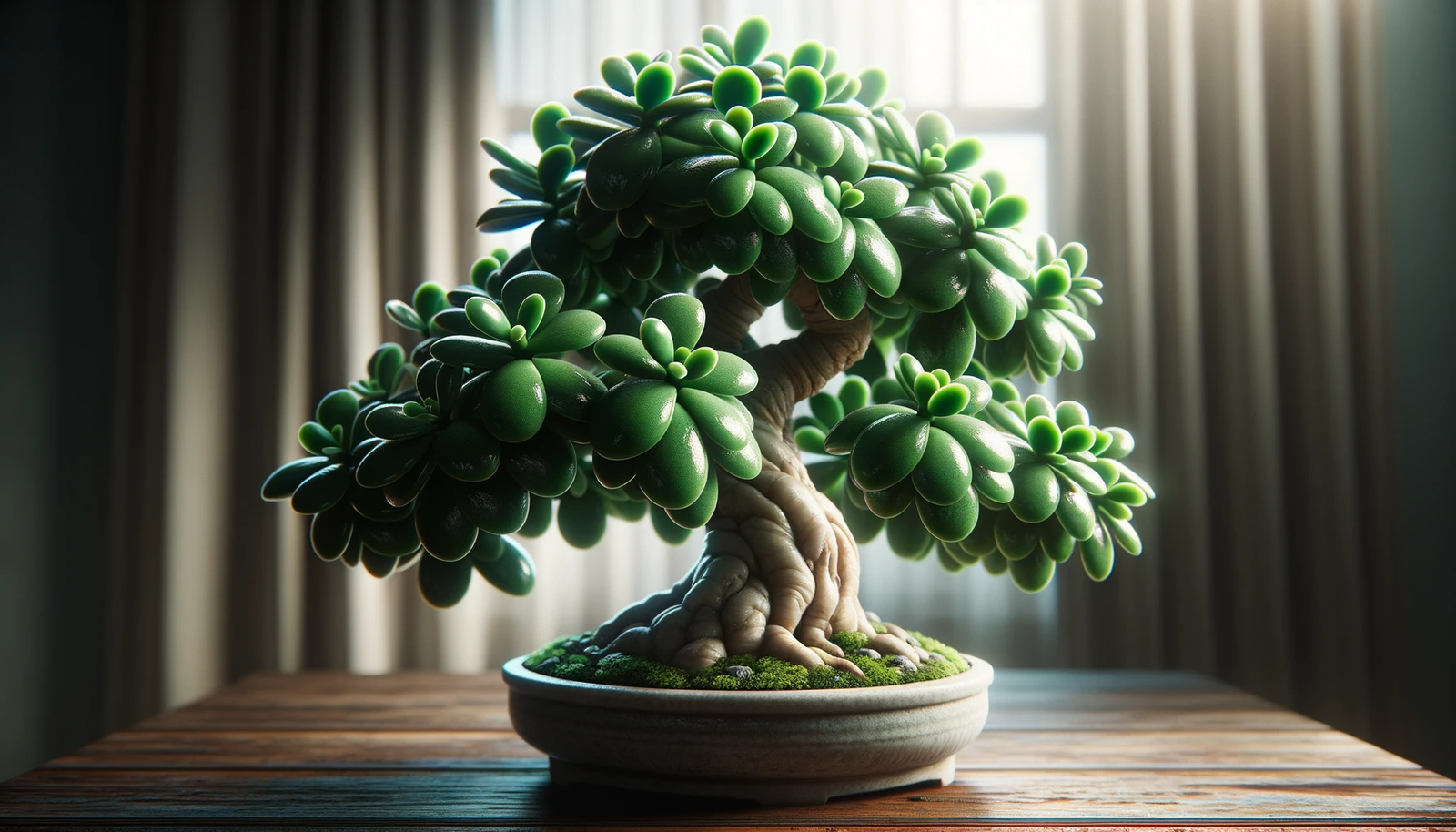On this page, you’ll find 7 handy hints and tips from Way of Life Bonsai for caring for Jade Bonsai.
Don’t forget to check out our tools and essential items, access advice and guidance from our experts, and check out our other specimen, beginner and Outlet trees.

Caring for Jade Bonsai: The Jade tree is considered an indoor tree in most temperate zones, although it can be grown outdoors in full sun (and sufficiently high temperatures). Keep temperatures above 5 degrees C (or 41F) at all times. It needs lots of light or even full sun, especially when kept indoors. If the leaves develop red tips or edges of the leaves this is a sign of enough sunlight reaching the plant.
Caring for Jade Bonsai: Jade trees can hold large amounts of water inside their leaves. Water sparsely and allow the plant to dry out a little bit between watering. During winter time watering can be as seldom as once every three weeks – though only when the tree is kept relatively cold – monitor your tree closely and water the moment the soil dries out slightly.
The Jade Bonsai is not as particular about over-watering as most other succulents.
Caring for Jade Bonsai: Once a month during the growth season (spring-autumn). A normal fertilizer (as described in our fertilize article) should be fine.
Caring for Jade Bonsai: As a succulent, water is contained its trunk and branches; they tend to bend from their weight. Jades respond well to pruning, which should be done regularly to force the tree to grow branches also lower on its trunk.
Do not use cut-paste though, as this might lead to rotting. The bark of the Jade is quite soft, so keep an eye out when you have wired the tree as the wire will bite in fast.
Caring for Jade Bonsai: Repot the three every second year in spring, using a very well-draining soil mixture. After a repot, don’t water the soil for about a week, to allow the cut roots to dry and callous. Otherwise you’ll get root rot.
Caring for Jade Bonsai: Easy to propagate using cuttings during the summer.
Caring for Jade Bonsai: The Jade is a strong plant, when watered correctly and receiving enough sunlight you should experience no issues with the plant’s health.
Jade Tree: A Symbol of Resilience and Prosperity in Horticulture
The Jade Tree, scientifically known as Crassula ovata, is a remarkable succulent that has captivated gardeners and indoor plant enthusiasts for generations. Revered for its distinctive appearance, ease of care, and cultural symbolism, the Jade Tree has become a cherished addition to households, gardens, and bonsai collections around the world.
1. Aesthetic Elegance:
With its thick, fleshy leaves and sturdy branches, the Jade Tree boasts a distinctive and elegant appearance. The oval-shaped leaves, often tinged with shades of green, silver, or red, lend a sculptural quality to this succulent. Whether as a standalone potted plant or part of a succulent arrangement, the Jade Tree brings a touch of nature’s artistry to any space.
2. Symbol of Prosperity:
In many cultures, the Jade Tree holds significant symbolic meaning, often associated with prosperity, good luck, and wealth. Its resilient nature, ability to withstand neglect, and slow growth contribute to its symbolic representation of enduring strength and financial success. Many believe that placing a Jade Tree in your home or office attracts positive energy and promotes good fortune.
3. Low Maintenance Appeal:
One of the appealing aspects of the Jade Tree is its minimal care requirements. Thriving in well-draining soil, this succulent is drought-tolerant and prefers infrequent watering. Its adaptability to various light conditions, from bright sunlight to partial shade, makes it an excellent choice for both indoor and outdoor settings. As a resilient plant, the Jade Tree forgives occasional lapses in care, making it ideal for novice gardeners or those with busy lifestyles.
4. Bonsai Beauty:
The Jade Tree’s unique characteristics also make it a popular choice for bonsai enthusiasts. Its naturally compact growth habit, coupled with its ability to develop a thick trunk and intriguing branch structures, renders the Jade Tree well-suited for bonsai cultivation. Bonsai versions of the Jade Tree exhibit a captivating blend of miniature stature and captivating aesthetics, creating a harmonious fusion of art and nature.
5. Feng Shui Harmony:
In Feng Shui practices, the Jade Tree is often considered a plant of abundance and balance. Placing a Jade Tree in specific areas of the home is believed to attract positive energy, nourish wealth, and promote harmony. Its rounded leaves symbolize coins, further reinforcing its association with financial prosperity in Chinese culture.
6. Versatile Growing Options:
Whether grown in a pot on a sunny windowsill, as part of a succulent garden, or shaped into a bonsai masterpiece, the Jade Tree showcases its adaptability and versatility. Its size can be controlled through pruning, allowing it to fit seamlessly into various gardening styles and spaces.
In conclusion, the Jade Tree is not just a plant; it’s a symbol of resilience, prosperity, and enduring beauty. Whether you’re drawn to its cultural significance, its aesthetic elegance, or its ease of care, the Jade Tree stands as a testament to the timeless appeal of succulents in horticulture. As you welcome this remarkable plant into your living space, you invite not just a green companion but a living emblem of prosperity and natural harmony.
Web Design | Terms | Privacy